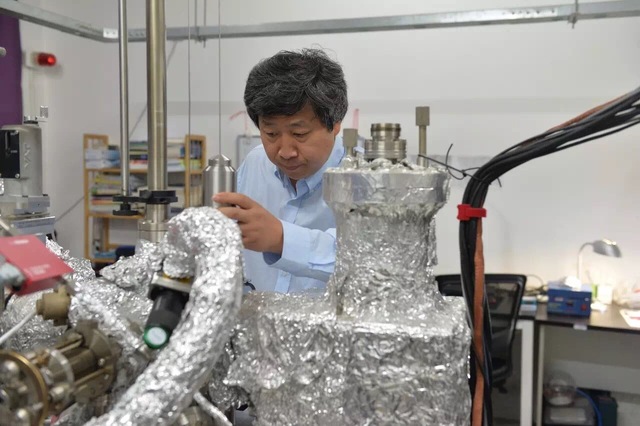

About three quarters of a century ago, Ettore Majorana introduced the novel elusive particles into theoretical physics, what are now known as "Marjorana fermions", unlike electrons and positrons, which constitute their own antiparticles. The monumental significance of this development required many intervening decades to fully appreciate, and despite being an "old" idea Majorana fermion remain central to diverse problems across modern physics, not only in neutrino physics, super-symmetry and dark matter, but also on some exotic states of condensed matter.
The observation of Majorana fermions in condensed matter would certainly constitute a landmark achievement from a fundamental physics standpoint, both because it could mean the first realization of Ettore Majoranna's theoretical discovery and, for more importantly, because of the non-Abelian statistics that they harbor. Moreover, success in this search might ultimately prove essential to overcoming one of the grand challenges in the field-the synthesis of a scalable quantum computer.
In 2008, Fu and Kane provided a groundbreaking development by theoretically predicting that Majorana bound states can appear at the interface between topological insulators (TIs) and superconductors. Topological superconductors (TSCs) become a research focus soon after they were theoretically expected to host Majorana fermions. So far, however, no TSC materials have been found in nature although there are some possible candidates. The theoretical work proposed that a topological insulator surface should show topological superconductivity when it is covered by a normal superconductor, i.e., a SC/TI heterostructure. In practice, however, it is difficult to grow a SC on a TI surface due to the poor thermo-stability of the TI materials and the chemical reaction at the interface. In 2012, Prof. Jinfeng Jia's group of Shanghai Jiao Tong University published a paper in Science (Science 336, 52-55 (2012)) which reported the first successful fabrication of a TI/SC heterostructure instead of the SC/TI heterosctructure. The coexistence of superconductivity and topological surface states was realized on the surface of the Bi2Se3/NbSe2 heterosctructure for the first time.
In 2014, Prof. Jinfeng Jia's group continued their intense search to provide experimental evidence of topological superconductivity in their special heterostructure, and published a paper in Physical Review Letters (Vol. 112, Page 217001) with their coworkers.In this work, a topological insulator/superconductor (TI/SC) heterosctructure, Bi2Te3/NbSe2, was investigated by using ultra-low-temperature and high-magnetic-field scanning tunneling spectroscope, resulting in a series of research achievement. It is the first time in experiments that the TI/SC heterostructure was demonstrated to be an artificial TSC. It is also the first time that quantum magnetic vortices and Andreev bound states were directly observed on a proximity-effect induced TSC, which lays the foundation for the search of Majorana fermions in condensed matter physics.
In 2015, the signatures of Majorana fermions were observed by systematically investigating the spatial profile of the Majorana mode and the bound quasiparticle states within a vortex in Bi2Te3/NbSe2. While the zero bias peak in local conductance splits right off the vortex center in conventional superconductors, it splits off at a finite distance ∼20 nm away from the vortex center in Bi2Te3. This unusual splitting behavior suggested its origin of the Majorana fermion zero mode. This work provides self-consistent evidences of Majorana fermions and was published in PRL, the coauthors include Prof. Fuchun Zhang and ZhuAn Xu of Zhejiang University, Q.H Wang of Nanjing University, Y. Liu of Pennsylvania State University and Q.K. Xue of Tsinghua University.

Most recently, on the basis of the above work, Professor Jia's research group made an important and historic step forward in searching Majorana fermions in the TI/SC heterostructures, together with other people in Collaborative Innovation Center of Advanced Micro-structure, including ZhuAn Xu’s group in Zhejiang University, Shaochun Li's group in Nanjing University; and Liang Fu at MIT. They announced that they have firstly observed the tracks of the mysterious majoronna particle in the vortex. The vortex center in a topological insulator / superconductor heterojunction surface is carefully measured by spin polarized scanning tunneling microscopy/spectroscopy. The specific spin polarized current which caused by the Marjorana particle has been clearly observed. The experimental data are strongly supported by the theoretical calculations. This work gives a definite evidence for the existence of Majorana fermions. For the first time, spin properties of Majorana particles are observed. They also provide an effective way to control the existence of Majorana particles by means of interaction. They lifted the veil of mysterious Majorana fermions, generated the possibility for the further research and application of the Majorana fermions. Their research work has been published in PRL online. As commented by a referee of the PRL, the experiment results are clear and convincing. They also provide a direct approach for observing the mysterious Majorana fermions.




